| Home > Policy > White Paper, Notice, Announcement > White Paper > JAPANESE GOVERNMENT POLICIES IN EDUCATION, SCIENCE, SPORTS AND CULTURE 1996 > Priorities and Prospects for a Lifelong Learning Society Chapter 2 Section 1 7 | ||
Numerous kinds of organizations provide learning opportunities for the general adult population. According to the "Social Education Survey" conducted by MESSC in fiscal 1993, 16,297,000 people were enrolled in classes and courses organized by boards of education, 12,363,000 in programs offered by local governments, and 2,508,000 in courses run by incorporated nonprofit organizations.
Private-sector providers (especially business corporations) also play an important role. According to the "Survey of Specific Service Industries" conducted by the Ministry of International Trade and Industry in 1993, a total of 1,922,000 people attended courses in culture centers in the 12-month period beginning in November 1992. The results of the Management and Coordination Agency's 1994 "Basic Survey of Service Industries" show that there were 789 fitness clubs and 5,432 establishments (excluding fitness clubs) offering private instruction in sports and fitness throughout Japan. Other establishments offering private instruction included 12,266 flower arrangement and tea ceremony schools, 12,630 soroban (Japanese abacus) schools, 17,106 music schools, 15,147 calligraphy schools, 1,323 schools of Japanese and Western dressmaking, and 19,573 schools specializing in other subjects. A comparison with the figures for 1989 shows that while there were declines in individual categories, there was an increase of approximately 7.5% in the total number of establishments.
Schools continue to function as providers of learning opportunities, especially for young people in preemployment age groups, but institutions of higher education in particular have begun to facilitate access for adult students. Other new trends include the establishment of extension courses in various types of schools, such as upper secondary schools and special training colleges.
One example of efforts to make university education more accessible to adult students is special selection procedures for adults. In fiscal 1995, 236 universities implemented such systems at the undergraduate level, and 4,189 people were admitted. At the graduate level, 178 universities accepted 4,889 students (total for national, local public, and private universities). In fiscal 1994, 358 universities accepted 10,056 special register students (total for national, local public, and private universities, excluding the University of the Air). In fiscal 1995, 33 universities and 113 graduate schools offered day/evening courses (totals for national, local public, and private universities), and a total of 11 national and private universities provided evening courses at the graduate level. In recent years the number of both institutions and adult students have shown a fairly consistent increase ( Figures 2.18 , 2.19 , 2.20 , 2.21 ).
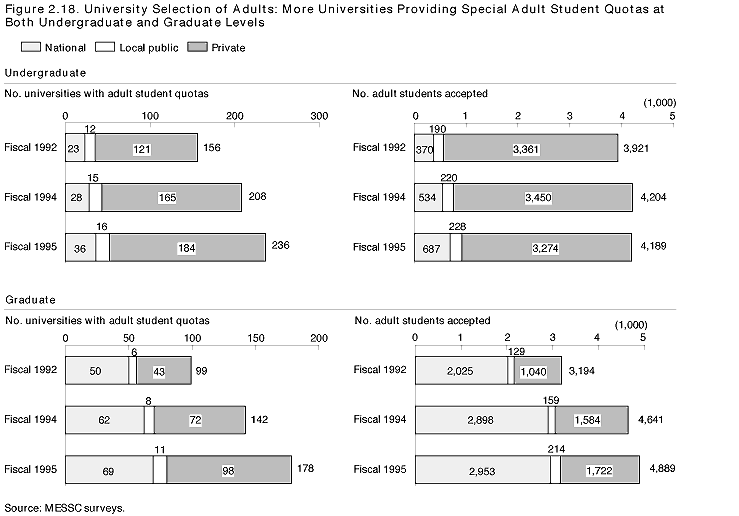
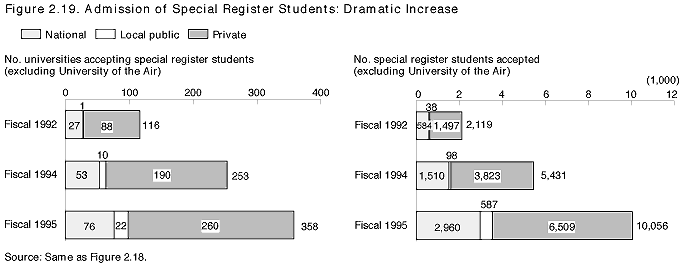
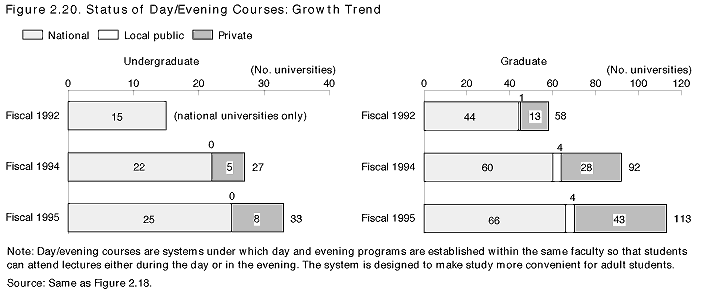
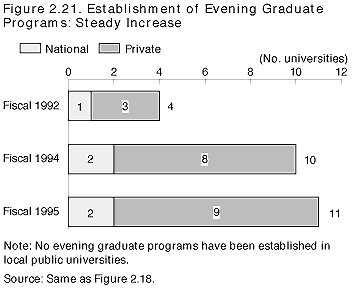
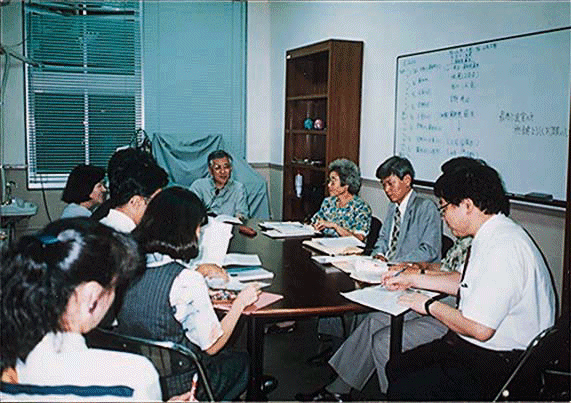
| Back to Top | MEXT HOME |